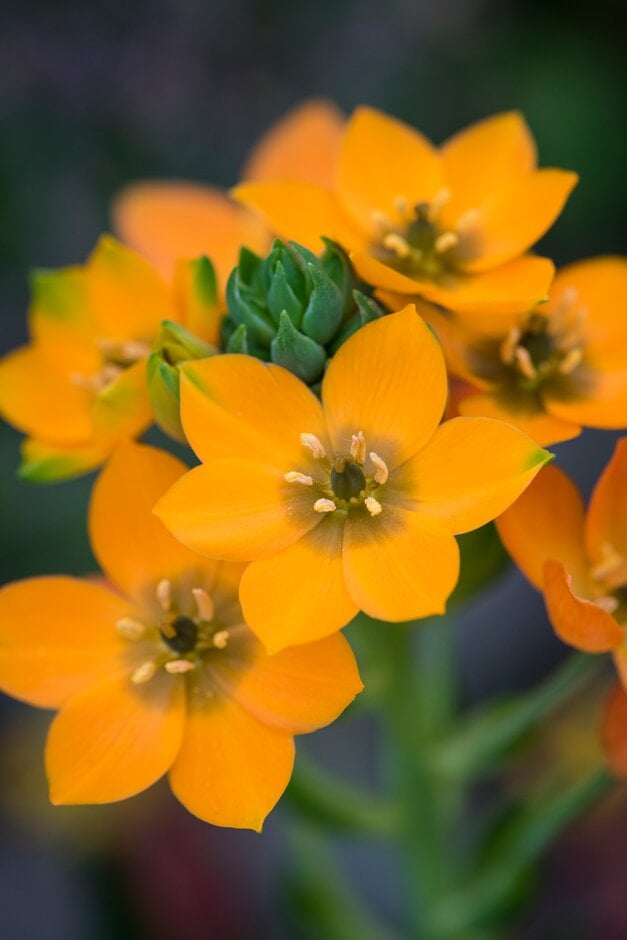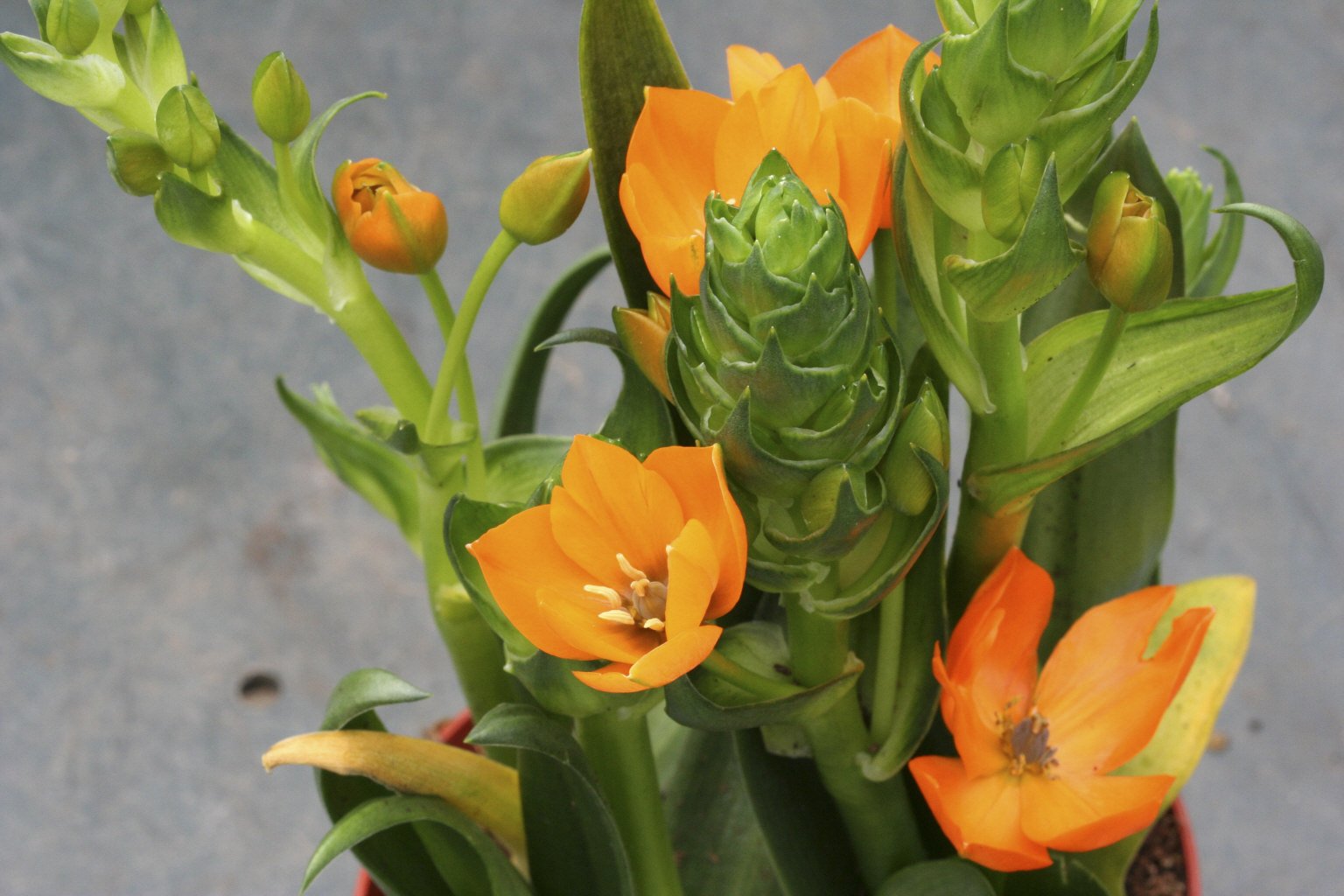Ornithogalum dubium
star of Bethlehem
A bulbous perennial to 30cm tall, with narrowly lance-shaped leaves and dense racemes of showy orange or yellow flowers 2.5cm across, sometimes with a dark centre, in winter and spring
Size
Ultimate height
0.1–0.5 metresTime to ultimate height
2–5 yearsUltimate spread
0–0.1 metreGrowing conditions
Moisture
Well–drainedpH
NeutralColour & scent
| Stem | Flower | Foliage | Fruit | |
| Spring | Orange Yellow | Green | ||
|---|---|---|---|---|
| Summer | ||||
| Autumn | ||||
| Winter | Orange Yellow | Green |
Position
- Full sun
Aspect
South–facing or West–facing
Exposure
Sheltered Hardiness
H2Botanical details
- Family
- Asparagaceae
- Native to GB / Ireland
- No
- Foliage
- Deciduous
- Habit
- Bushy
- Potentially harmful
- Harmful if eaten. Wear gloves and other protective equipment when handling TOXIC to pets if eaten (dogs, cats, rabbits, rodents) - see the HTA guide to potentially harmful plants for further information and useful contact numbers
- Genus
Ornithogalum are bulbous perennials with linear or strap-shaped basal leaves and racemes, sometimes contracted, of star-shaped or cup-shaped, white, yellow or orange flowers
- Name status
Correct
- Plant range
- South Africa (Cape)
How to grow
Cultivation
Plant in spring, water well when in growth. Lift and overwinter frost free place. Alternatively grow in containers in peat-free, loam-based compost, keep dry when dormant and re-pot in spring
Propagation
Propagate by seed as soon as ripe in the autumn or sow in spring. Remove offsets when dormant. Further bulb propagation advice
Suggested planting locations and garden types
- Patio and container plants
Pruning
Trim off dead foliage
Pests
Generally pest-free
Diseases
Generally disease-free
Love gardening
Sign up to receive regular gardening tips, inspiration, offers and more
View our Privacy Policy
Get involved
The Royal Horticultural Society is the UK’s leading gardening charity. We aim to enrich everyone’s life through plants, and make the UK a greener and more beautiful place.

